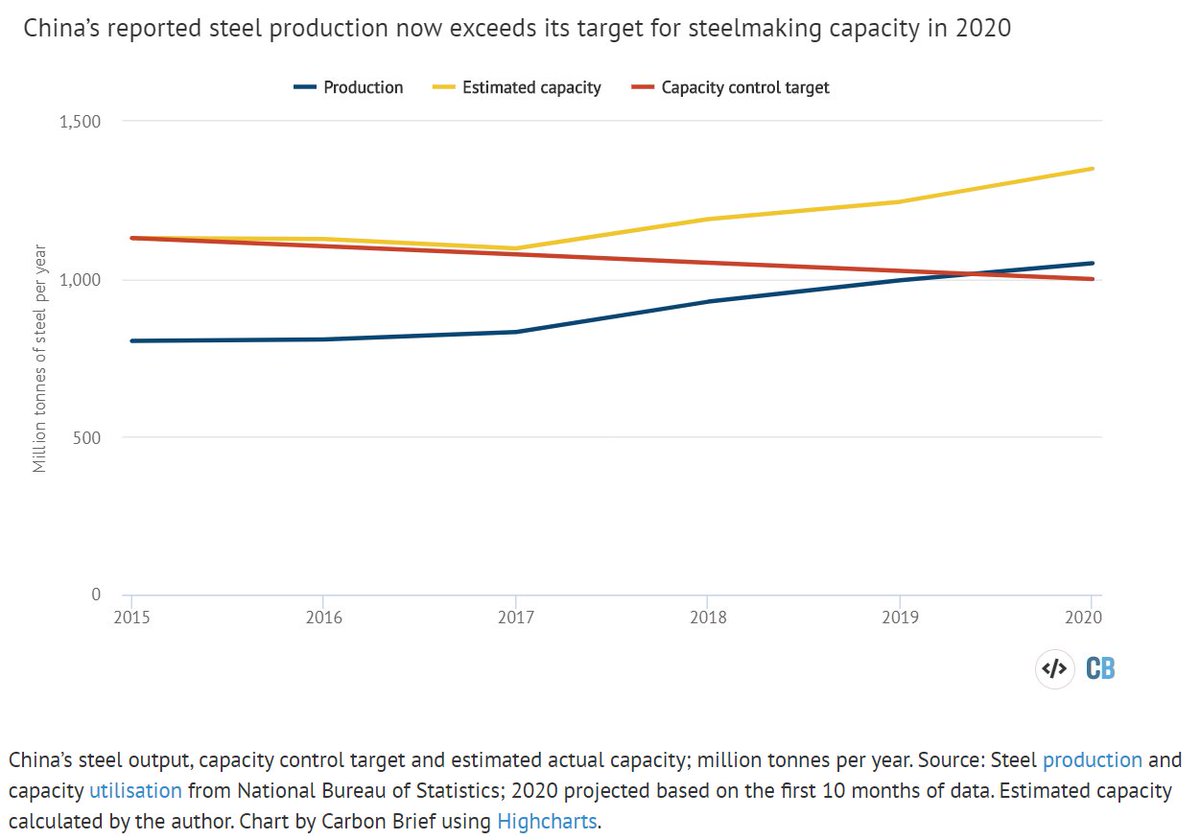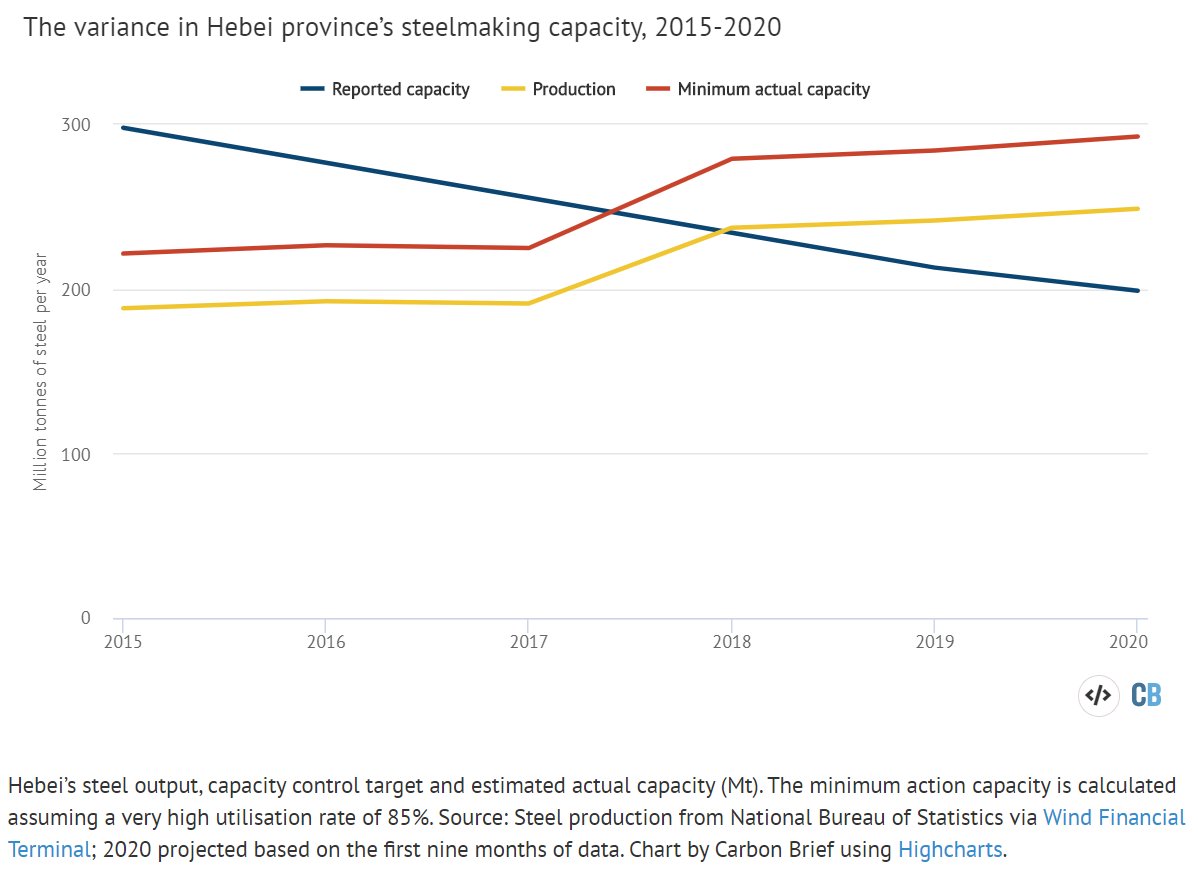Breaking: China's CO2 emissions reached an all-time high on the third quarter of 2020 as government's economic recovery approach favored heavy industry and steel mills skirted capacity controls. THREAD
https://j.mp/2Jwrq18 @CREACleanAir https://twitter.com/CarbonBrief/status/1334331784813744135
https://j.mp/2Jwrq18 @CREACleanAir https://twitter.com/CarbonBrief/status/1334331784813744135
The surge in steel&cement production has put air quality targets at risk, as the air quality control regions around Beijing & Xi'an fell short of their (modest) targets for Oct-Dec period, with one month to go, as we highlight here: https://uk.reuters.com/article/us-china-pollution-idUKKBN28D0CN
In 2017, China set a target of controlling steelmaking capacity at 1,000 mln tonnes, down from 1,130Mt in 2015. However, 2020 steel output is set to reach 1,050Mt, showing that there is far more steel capacity than reported.
Hebei, the heavily industrialized province surrounding Beijing, was supposed to cut its steel capacity to 200Mt in 2020. Instead, it increased steel production from 188Mt in 2015 to a projected 250Mt this year.
The industry ministry recently called out provinces and companies for "gaming the numbers": Closed steel mills have been replaced with new ones, with a lot of new capacity unreported or unauthorized and a lot of older unregistered capacity up and running.
Comparing with the maximum output that could have been achieved if the capacity targets had been met, "excess" steel production will reach 200Mt this year, 2.5x U.S. total output, resulting in 300Mt excess CO2 emissions, equal to Poland's total emissions.
Steel targets were a key part of Xi's economic policy under "supply side structural reforms", a key part of the war on pollution, and China's answer to complaints from about dumping steel on the global market. Missing the targets by a wide margin complicates all of these issues.
Highlighting the environmental and climate implications, steel industry is the largest coal and electricity consumer in China, and the largest emitter of air pollutants and CO2, when emissions from electricity use are included.
Government officials will say that steel demand proved far stronger than projected back in 2017, which it did. However, that demand is almost entirely created by the government itself, through infrastructure and real estate stimulus.
The failure to curtail steel capacity and output is a failure of the efforts to put the economy on a healthier footing and cut the reliance on wave after wave of construction stimulus.
As China prepares to implement the 2060 carbon neutrality target, the failure of steel capacity control is a warning sign about the staying power of emission-intensive industry interests.
What do these emissions&industry trends mean for the 2060 carbon neutrality target? Remember the emissions&steel surge had already happened when Xi made the announcement, so can be seen as papering over bad short-term trends, or sending a signal at home to change direction.

 Read on Twitter
Read on Twitter




